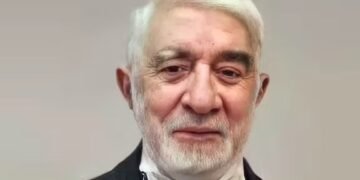compiled by: Emili TK
Former US President Donald Trump has expressed his intent to abolish daylight saving time (DST), labeling it as both “inconvenient” and “very costly” for Americans.
In a post shared on his platform, Truth Social, Trump stated that while DST may have “a small but vocal constituency,” it is unnecessary and outdated. He added that his Republican party would prioritize efforts to end the practice.
DST involves moving clocks forward by one hour in the spring and back by one hour in the fall to maximize natural daylight. It is currently observed in about one-third of the world’s countries, including most of Europe, as per data from the Pew Research Center. However, in the US, there has been long-standing debate over the value of continuing the practice.
Advocates for standard time argue that it is healthier, offering more morning light that aligns better with natural sleep cycles and reduces the risk of sleep disturbances. Critics of DST claim that switching clocks disrupts routines and can harm overall well-being.
On the other hand, proponents of permanent DST highlight benefits such as extended evening daylight, which they argue reduces crime, saves energy, and lowers the number of traffic accidents. Both camps believe their preferred approach would positively impact the economy.
Trump Revives a Long-Standing Debate
This isn’t the first attempt to reform DST in the US. In 2022, the Senate passed the Sunshine Protection Act, a bill aimed at making DST permanent. The bill, introduced by Republican Senator Marco Rubio, failed to progress in the House and didn’t reach President Joe Biden’s desk for approval.
Interestingly, Rubio has now been chosen by Trump for the role of secretary of state in his forthcoming administration, potentially setting the stage for a renewed push to end the biannual clock changes.
Historical Context of DST
Daylight saving time was first introduced in the US in 1918 during World War I to conserve energy. However, it faced backlash from farmers and was repealed after the war. It returned during World War II and was eventually standardized in 1966, though states were allowed to opt out. Today, Hawaii and most of Arizona do not observe DST.
The Costs of DST
Research suggests that DST may have more drawbacks than benefits. Joan Costa-i-Font, a professor at the London School of Economics, found that shifting clocks negatively impacts sleep patterns, increases stress, and harms mental health. Economically, Costa-i-Font’s study estimates that abolishing DST could lead to an annual increase in productivity worth approximately $792 per person.
Global Shifts Away from DST
Some countries have already moved to eliminate the practice. In 2022, Mexico ended DST nationwide, although regions near the US border retained it for economic coordination. Jordan also abolished DST in the same year. Meanwhile, countries like Turkey and Russia have opted to maintain permanent DST in recent years.
In the US, public opinion appears to favor change. A Monmouth University poll revealed that about two-thirds of Americans prefer to make DST permanent, signaling strong support for reform.
As Trump revives this decades-old debate, his administration’s success in addressing the issue could have lasting implications for Americans’ daily lives and routines.

 English
English






































